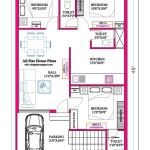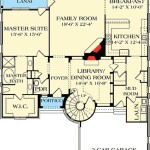Cardio Exercise Plan At Home
Cardiovascular exercise, often referred to as cardio, is essential for overall health and well-being. It strengthens the heart, improves circulation, boosts energy levels, and aids in weight management. Engaging in regular cardio activities reduces the risk of chronic diseases such as heart disease, stroke, type 2 diabetes, and certain types of cancer. While gyms and fitness centers offer a variety of cardio equipment and classes, effective cardio workouts can be performed comfortably at home without any special equipment. A well-structured cardio exercise plan at home can be tailored to individual fitness levels and preferences, making it accessible and sustainable for long-term health benefits. This article provides a comprehensive guide to developing and implementing a successful at-home cardio exercise routine.
Before beginning any new exercise program, it is crucial to consult with a healthcare professional, particularly for individuals with pre-existing health conditions. This consultation helps determine a safe and appropriate exercise intensity and duration, minimizing the risk of injury or adverse health effects. It's also essential to listen to your body and adjust the intensity or duration of exercise based on your comfort level and any pain or discomfort experienced. Progressing gradually and consistently is key to achieving long-term fitness goals while minimizing the risk of injuries. Warm-up and cool-down periods are also crucial components of any exercise plan to prepare the body for activity and facilitate recovery afterward.
Key Considerations Before Starting
Before embarking on a cardio exercise plan at home, consider certain factors to ensure safety, effectiveness, and sustainability. The primary considerations are individual fitness level, available space, and the types of exercises that are enjoyable and sustainable for the individual. Each of these elements influence the tailored program that yields the best results.
Firstly, assessing the current fitness level is paramount. Individuals who are new to exercise or have been inactive for a long period should start with low-impact activities such as walking or marching in place. As fitness levels improve, the intensity and duration of workouts can be gradually increased. Individuals who are already moderately active can begin with more challenging exercises like jogging or jumping jacks. It is important to accurately gauge your base fitness so that you do not over exert yourself and risk injury.
Secondly, assess the available space. Some cardio exercises, like running in place or jumping jacks, require minimal space. However, other activities, such as dancing or rope jumping, may require a larger area to move freely. Ensure that the workout area is clear of obstacles and has adequate ventilation. If space is limited, consider modifying exercises or choosing activities that can be performed in a confined area.
Thirdly, the choice of exercises should align with personal preferences and enjoyment. Choosing activities that are enjoyable increases adherence and makes it more likely that the individual will stick to the exercise plan long-term. Experiment with different types of cardio exercises to find those that are both effective and enjoyable. Options include dancing, stair climbing, jumping rope, and bodyweight exercises. By combining different exercises, you will find what best works for your lifestyle and preferences.
Sample Cardio Exercises for Home
A variety of cardio exercises can be performed at home without any equipment. These exercises can be modified to suit different fitness levels and preferences. It is imperative to understand the correct form of each exercise to prevent injury and maximize results. The following are a few examples:
Walking or Marching in Place: This is a low-impact exercise suitable for beginners or individuals with joint pain. Simply walk or march in place, lifting the knees slightly higher for a more intense workout. Varying the pace and intensity can add challenge. Consider also using arm movements to increase the activity of the upper body.
Jogging in Place: Jogging in place is a step up from marching and is a great way to get your heart rate up. Focus on lifting your knees and pumping your arms for a full-body workout. You can also vary the pace and intensity to increase the challenge. When jogging in place, think about simulating your natural jogging form so that you can maintain the correct posture and avoid injury.
Jumping Jacks: A classic cardio exercise that engages multiple muscle groups. Start with feet together and arms at your sides. Jump, spreading your feet apart and raising your arms overhead. Jump back to the starting position. Modify the exercise by stepping one leg out to the side at a time instead of jumping for a lower-impact option. Keep your core tight and your head up for the proper form.
High Knees: Stand with feet hip-width apart. Alternate lifting your knees towards your chest, bringing them as high as possible. Pump your arms as if running. This exercise targets the core and leg muscles while elevating the heart rate. Aim to develop a rhythm that challenges without causing strain.
Butt Kicks: Stand with feet hip-width apart. Alternate bringing your heels towards your glutes, kicking your buttocks with each heel. Pump your arms as if running. This exercise works the hamstrings and glutes while providing a cardio workout. Try to keep your shins close to your body when kicking back.
Mountain Climbers: Start in a plank position with hands shoulder-width apart and body in a straight line. Alternate bringing your knees towards your chest as if running. Maintain a stable core and avoid arching the back. This exercise engages the core, shoulders, and legs, providing a full-body cardio workout. Keep your back straight and your core engaged.
Dancing: Dancing is a fun and effective way to get your heart rate up and burn calories. Put on your favorite music and move to the rhythm. Vary the intensity and style of dance to challenge different muscle groups and keep the workout interesting. The most important aspect of dancing is that you keep moving and pushing yourself.
Stair Climbing: If you have stairs in your home, use them for a cardio workout. Walk or run up and down the stairs, varying the pace and intensity. This exercise strengthens the legs and glutes while providing an excellent cardio workout. Ensure proper footing and use the handrail if needed. Be careful not to overextend yourself and cause an injury by over doing it.
Rope Jumping: Jumping rope is an excellent cardio exercise that improves coordination and burns calories. Use a jump rope or simulate the action without a rope. Vary the pace and jumping style to challenge different muscle groups. This exercise requires more coordination and effort than some other exercises.
Developing a Structured Workout Plan
A structured cardio exercise plan is essential for achieving consistent results and avoiding burnout. The plan should include warm-up, cardio activity, and cool-down components. The duration and intensity of each component should be tailored to the individual's fitness level and goals.
Warm-up: The warm-up prepares the body for exercise by increasing blood flow to the muscles and improving flexibility. A typical warm-up should last for 5-10 minutes and include light cardio activities such as marching in place, arm circles, and leg swings. Dynamic stretching exercises, such as torso twists and knee lifts, can also be incorporated. The key is to increase your body temperature and prepare your muscles for more strenuous activity.
Cardio Activity: The duration and intensity of the cardio activity should be adjusted based on the individual's fitness level and goals. For beginners, 20-30 minutes of moderate-intensity cardio is recommended, 3-5 days per week. As fitness levels improve, the duration and intensity can be gradually increased. High-intensity interval training (HIIT), which involves alternating between short bursts of high-intensity exercise and periods of rest or low-intensity exercise, can be an effective way to burn calories and improve cardiovascular fitness. This type of training is often recommended for those who have a good base level of cardio condition. It's suggested to start slowly and gradually increase the intensity as your condition improves.
Cool-down: The cool-down helps the body gradually return to its resting state and reduces the risk of muscle soreness. A typical cool-down should last for 5-10 minutes and include light cardio activities such as walking or stretching. Static stretching exercises, such as holding a stretch for 30 seconds, can also be incorporated to improve flexibility. The goal is not only to cool down but to improve flexibility as well.
Sample Weekly Schedule:
Monday: 30 minutes of brisk walking or jogging in place, followed by 5 minutes of stretching.
Tuesday: 20 minutes of dancing, followed by 5 minutes of cool-down exercises.
Wednesday: Rest or low-impact activity such as yoga or stretching.
Thursday: HIIT workout: 20 minutes of alternating between 30 seconds of jumping jacks and 30 seconds of rest, followed by 5 minutes of cool-down exercises.
Friday: 30 minutes of stair climbing or rope jumping, followed by 5 minutes of stretching.
Saturday: Active recovery: Light cardio activity such as a leisurely walk or cycling.
Sunday: Rest.
Adjust the exercises, duration, and intensity of this schedule to match your individual fitness level and preferences. It's also beneficial to consult with a fitness professional to create a customized workout plan.
Remember to hydrate adequately by drinking water before, during, and after your workout. Proper hydration helps prevent muscle cramps and fatigue. Wearing appropriate workout attire and supportive shoes will also help prevent injuries and improve comfort.

Pin On Old Folders

Easy Cardio Workouts Collection

Easy Cardio Workouts Collection

30 Minute Indoor Cardio Workout The Best At Home Exercises

At Home Cardio Workout With No Equipment

Cardio Mill Workout Plan At Home

Hard Cardio Workouts Collection

The Best Cardio Exercises For Beginners Garage Gym Reviews

Free 30 Day Home Workout Plan S Nourish Move Love

30 Minute Indoor Cardio Workout The Best At Home Exercises








